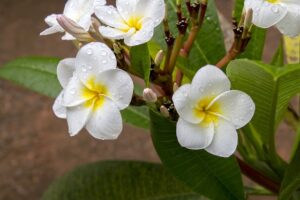Aquamation is a method of final disposition that can be used for both human and animal loved ones. Alkaline hydrolysis is the scientific term for this water-based process. It is the same process that occurs naturally when a body is laid to rest in the soil. A combination of gentle water flow, temperature, and alkalinity is used to accelerate the breakdown of organic materials. The cremation services in Roy, WA are available for discussion if you want to learn more about the process.
What Occurs
The aquamation procedure is carried out following any viewing or visitation services requested by the family. When the procedure is complete, the individual body is respectfully placed in a stainless steel vessel. Based on individual characteristics such as weight, sex, and embalming status, alkali is added to the process, and the vessel fills with water. The solution is heated and gently circulated throughout the process.
At the end of the process, all material has been reduced to its simplest building blocks; no DNA or RNA remains. The sterile process water is recycled, and the vessel rinses the equipment and remains with fresh water. Only the inorganic bone minerals remain after the operator opens the door. These minerals are powdered and returned to the family in an urn. This final processing step is the same as that used for flame cremation. When a loved one’s remains are returned to the family, many families gather for the celebration of life.
Are the Ashes Different From Those Obtained Through Flame Cremation
The mineral remains from the bone, along with some ash from the cremation box or casket, clothing, and anything else that may have been placed in the process with the body, make up the ashes from a flame cremation. As there are no other materials in the ash, the ashes from the aquamation are only the mineral remains from the bone.
The carbon discoloration from burning causes the ash from a flame process to be gray in color. Ash from aquamation can range in color from white to tan. Both processes can result in slight color variations from person to person. The ash’s consistency varies as well. Flame cremation ash is described as chippy bone fragments. Aquamation ash is a homogeneous or consistent powder. With aquamation, the family receives 20 to 30 percent more ash remains.
What Exactly Is the Science Behind the Procedure
The water, not the alkali, performs the breakdown during the aquamation process, which is a commonly misunderstood fact. Any reaction in which bonds are cleaved by the insertion of water molecules is referred to as a hydrolysis reaction. A base is added to water to create an alkaline environment in alkaline hydrolysis. The water molecules’ behavior changes, causing them to dissociate into hydrogen and hydroxide ions. The solution contains only five percent alkali and 95 percent water. The physical characteristics of the system, the continuous flow of the solution, and the heat are all equally important to the process. All of this has to do with collision theory and the rate and completeness of a reaction.
them to dissociate into hydrogen and hydroxide ions. The solution contains only five percent alkali and 95 percent water. The physical characteristics of the system, the continuous flow of the solution, and the heat are all equally important to the process. All of this has to do with collision theory and the rate and completeness of a reaction.
The environmental impact is not limited to energy. To get a complete picture of the impact of our funeral technologies on our planet, a cradle-to-grave approach must be taken. Life cycle assessments are used by scientists to assess the overall impact. When all impact categories were considered, aquamation had the lowest environmental impact of any other body care option. If you have any questions, please contact the cremation services in Roy, WA, or come and see us.

